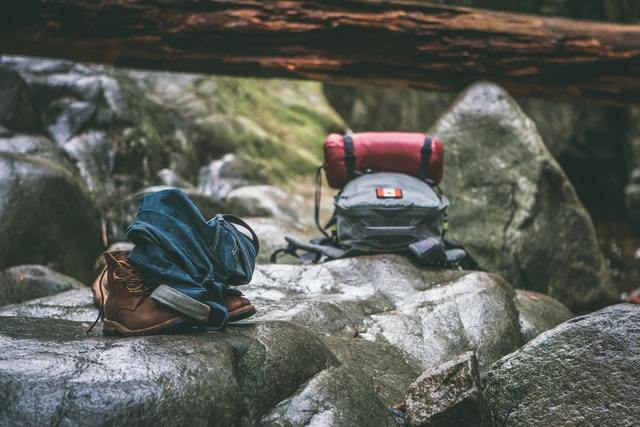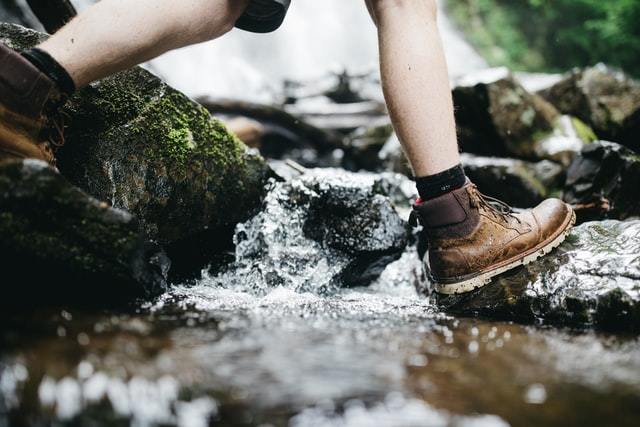What To Pack For A Day Hike (Checklist For Hikers)
Day hikes are full of adventure, vitamin D, exercise, and fresh air! However, if you want to stay safe and make the most out of your journey, you need to be prepared. This involves gathering up all the necessary items for hiking you could ever need, just in case.
We’re going to cover exactly what you need to put in your hiking backpack before you set off, so you can just focus on taking in the beautiful outdoors. By the end of our guide, you’ll know exactly what to pack for a day hike, the right pack for you, and more!
The Importance of a Good Day Pack
Not every backpack is made equal, and trust me, you don’t want to find that out the hard way! However, it can sometimes feel overwhelming with the massive amount of different backpack features out there. Let’s discuss essential features, nice-to-have extra features, and those you can do without.
Your pack must be an actual backpack with one strap on each shoulder – not a crossbody, messenger, etc. Those little string packs aren’t going to distribute weight effectively either. Chest and waist straps will help with this. Shoulder straps should be well-padded and not cut into your skin or chafe.
Mesh paneling on the portion that touches your back will allow for proper airflow to keep your back dry. Look for a hiking backpack with many pockets of different sizes, including interior pockets to keep valuables like cards, IDs, and keys. A sleeve for a hydration pack is crucial if you are bringing one along.
One of the most important aspects to look at is the capacity, and with backpacks, the volume is measured in liters. Anywhere between 15 and 30 liters will serve you for the majority of hikes.
If you're a light traveler, then 20 liters or less will offer you enough room for everything. If you're the "parent" of the group and like to bring snacks, an extra change of clothes, and general "extras," then you'll want to move up to a pack from 20-35L.

10 Essential Items to Bring on a Day Hike (Checklist No. 1)
Now that we have the right pack down, what are you going to store inside it?

What to Wear for a Day Hike (Checklist No. 2)
Hiking Footwear (Boots, Shoes, or Trail-Running Shoes)
Trail-running shoes/general cross-training shoes are fine for most trails that are well-kept and smooth. However, if you're going to be traversing through water, over rocks, sharp objects, through the brush, etc., then you're better off with hiking boots.
Hiking boots offer greater stability and a deep tread which provides a strong grip on slippery/uneven surfaces like those you’ll find in ravines and rivers. The added ankle support that boots offer is also great for preventing ankle sprains.
Base Layers
These layers are those that lay against your skin, which means they’re the most important. They must be quick-drying, breathable, and resist odors/bacteria growth. If you’re hiking in the warmer months, make these layers a short-sleeve t-shirt or tank top. If not, then your regular old cotton t-shirt will work just fine.
If you're hiking in chilly weather, this needs to be made of merino wool, which is incredibly warm, lightweight, and quick-drying.
Outer Layers
If it's really warm out, you may just opt for a little windbreaker or merino wool jacket. Both are great for offering a bit of protection in the cooler mornings or evenings. In Spring and autumn, you'll want to ramp up your outer layers with a fleece pullover that offers enough flexibility for a full range of motion.
If you're braving the cold, just go all-out with a down jacket. They compress into a compact size and are relatively lightweight, too!
Rain Jacket
Rain can happen, no matter the season. It’s a smart move to keep a rain jacket always tucked away in your backpack, just in case. Just make sure it’s breathable yet water-resistant. Also consider backpacks that have a waterproofing feature as this can protect the items inside your backpack from being drenched by the weather.
Wool Socks
These aren’t necessary for warm weather, though merino wool still does a great job at keeping blisters at bay. You can choose your desired thickness and length, depending on the shoes you’re sporting and weather conditions.
Hat
We consider a hat an outright necessity for hiking. Get one with a visor or a wide-brimmed sun hat that will protect your face and neck from the sun. In the colder months, opt for a warmer head covering like a beanie.
Gloves
For colder weather, grab yourself a pair of gloves that are flexible and let you use your touchscreen devices as well. You can find mittens or finger gloves, just make sure they are warm.

Multi-Day Hikes (Packing for 2-7 Days)
Remember what I said about packing light and leaving extras at home? Well, if you’re going to be gone for more days, your packing list will change.
2-3 Days
You’ll need navigation (on all trip lengths), along with sun protection and illumination. Take enough food and more than enough water than you think you’ll need for 3 days. Bring along a knife or multi-tool as well as some kind of shelter.
4-5 Days
For 4-5 days, you’ll want to bring along more variation in terms of clothing. You’ll need to bring along at least one set of clothes for cooler and warmer conditions, just in case the weather changes.
A short-sleeved shirt, a long-sleeved shirt, a pair of pants, and some shorts should be the very minimum. An insulation top will be useful at night and early mornings as well.
7+ Days
Grab a map, compass, flashlight, Firestarter, matches, sunscreen, and a first aid kit to start. Food and water are a must, and a tent, sleeping bag, and sleeping pad are useful. If you can, bring along a stove and fuel to cook your food.
Although you should bring food and water, also remember water treatment supplies in case you run out of the water you brought along. Emergency and hygiene supplies are essential to stay healthy and safe, along with a small repair kit.
How to Pack for a Day Hike (Tips for Beginners)

Keep your least bulky/heavy items at the top of your back, with the load close to your center of gravity, so you keep good posture instead of hunching over. Also, make sure your pack is balanced, so the straps aren't pulling more on one side of your body than the other.
In addition, keep the items you'll use more often handy. Your snacks and water bottle(s) should be easy to access without taking your backpack off, which is where side pockets come in. Also, keep a spare change of clothes near the top.
If you can, organize and try to memorize in a way that you'll know where everything is.
People Also Ask (FAQs)
What should you not take on a hike?
You probably want to avoid taking too many valuables, like jewelry, a massive DSLR camera, etc. Bring only the necessary items of clothing along with you. You probably don’t need a tablet, books, a folding chair, and generally “spare” things.
What snacks to bring on a hike?
Well, you already know about the famous trail mix, which is such a great hiking snack it was practically named after it! Aside from that, dried fruit, granola, veggies, tuna, beef jerky, peanut butter, and bananas are all great selections. Also include water, lots of water!
What should I eat before a strenuous day hike?
Have something that’s going to be slow-digesting, like something with casein (casein powder, Greek yogurt, cottage cheese). Apples or bananas with peanut butter are nice, well-rounded snacks that are calorie-packed and offer a nice balance of potassium, fats, carbs, and protein. Oatmeal with fruit is another favorite.
How do you carry a water bottle while hiking?
A hydration bladder/pack is an excellent choice as you have access to water, hands-free. However, you can also use hydration belts and waist packs. If none of those suit you, there are tons of handheld bottles out there.
Conclusion
Now that you know everything you should know when it comes to what to pack for a day hike and what to pack for a multi-day hike, are you ready to set out on an adventure? We hope our guide was able to help you out and that you feel confident in what you’re bringing along. Thanks for tuning in, and we’ll see you again soon!
